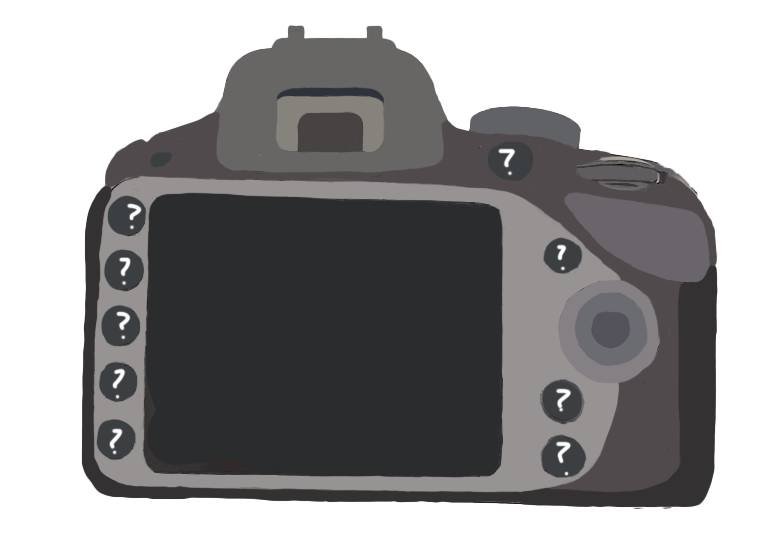As a child, my portraits always appeared a little funny.
There was this certain awkward aura that my eight-year-old self emanated at every snap of the lens. Whether it was my inability to smile properly or my odd posture, there always seemed to be something off about my appearance and demeanor every time I posed for a photo. And, as any self-obsessed kid would do, I blamed someone else — specifically, the photographer.
Fueled by this conviction, I childishly decided to prove it by uncovering what exactly these photographers were doing incorrectly through my mom’s old Nikon D3300 that had been gathering dust in the garage for a year.
It wasn’t difficult for me to discern the meaning of buttons such as the delete button or the on/off button. But with a myriad of other buttons of unknown functions as well as a user interface cluttered with cryptic numbers and undecipherable acronyms, I was completely lost. In the face of a seemingly insurmountable task, my resolve crumbled quickly. I carefully set the camera back down and decided to shamelessly accept my defeat within mere minutes of my cocky declaration, leaving the camera to gather dust in the corner of our garage once again.
I have always had a strong aversion to new things, and this wasn’t the first time I swiftly rejected the notion of experiencing something new before I gave it any effort. Whether it was resisting moving into a new home, adjusting to new medication, or trying something as simple as new foods, I had a minuscule circle of comfort that I wasn’t willing to step out of, especially not for activities with steep learning curves. Perhaps it was because of my stubbornness: I was too stubborn to change and too stubborn to accept the fact that learning how to use a camera would take time and effort.
In high school, I inevitably had to pick the DSLR camera up again to cover sports games for El Estoque. Evidently, there was only so much that I could do without knowing how a camera worked.
Surprisingly, it wasn’t a life-changing experience that magically dissipated my fear of being outside my comfort zone. Instead, it was a bit-by-bit process that spanned the years since my proud accusation against photographers and involved conquering several long-lasting fears, including trying new cuisines (as long as there were no bell peppers) and acupuncture (as long as the needle wasn’t too long and scary.)
Maybe through all this, I’ve slightly matured in the process as well, in that I’ve finally realized that it was unreasonable to turn a blind eye to issues in front of me and give up immediately just because they were new or different. Most importantly, it wasn’t a one-off act of bravery where I pushed through my limits a singular time, such as by giving a speech. The process is less about taking grand, singular steps and more about the small, consistent steps that, over time, transformed what I previously thought was daunting into something manageable or even comfortable.
Eventually, I did decide to learn how to use a camera, and looking back, I really did overthink the complexities involved. It ultimately boiled down to only four core concepts — ISO, f-stop, shutter speed and focal length — that I needed to understand; everything else was either self-explanatory, optional or already automated by the camera.
To the dismay of my 8-year-old self, I’ve figured out that I might just suck at crafting a basic smile in front of a camera. My reflection in the lens still carries that familiar awkwardness from my childhood. And I’m fine with that conclusion. It wasn’t just a matter of coming to terms with my awkward smile and accepting that it was, in fact, not the photographer’s fault — it was about finally acknowledging that staying within my comfort zone inhibited how much I could accomplish. And who knows, maybe I’ll try to learn how to take a selfie in 2024.










